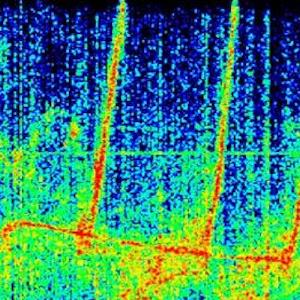The amorphous and the androgynous. The non-linear. The 'foggy side'. More cerebral less mechanical. Music which evokes space, dimensions, colours and feelings via the neo-cortex. Welcome to the world of ambient music. Soothing, sad, haunting, ominous, transformative, particulate or noisy. Can't sing the ambience like we can't see the air. The ambient musician is often stepping outside preconditioned forms and structures. Dwelling into the side of music which seems to have no rules. Ambient music has a long yet fuzzy history of formation alongside structured music, stretching over centuries and societies. Sound has always evoked feelings in human beings and much like art, it has coloured our senses and imagination long before the term Ambient Music came to be.
Brian Eno’s Music For Airports celebrates its 40th anniversary this year. The album is widely regarded as the cornerstone of ambient music, as we know it today. The 'widely regarded' part mostly authenticates itself by way of repetition. Popular blogs and music writers often peg their claims via icons. The idea of music designed specifically as a background feature in the environment was first tried by Muzak Inc. mid-1953, and has since come to be known generically by the term 'Muzak'. Vaguely described as a set of familiar tunes arranged and orchestrated in a lightweight and derivative manner. Tested initially in retail stores and gas stations in Chicago, it quickly spread across public spaces in the following decades. Popular culture and mainstream society has since adapted to sound as a 'background feature' in daily life. But wait! 'Muzak' is not ambient music. "A cluster of all the disparate sounds into one aural frame... they became music" recalls Brian Eno in the linear notes of Music for Airports 1978. He also says "Ambient music, as ignorable as it is interesting..." However, ambient music did not start with Brian Eno. For starters, one can listen to the vast archive of tape-feedback, drones, layered noise-tracks and mono-frequency atmospheres of Élaine Radigue which clearly predates Brian Eno's much celebrated 'Music For Airports-1'. Talk about chauvinism in Ambient music fandom?
Irmin Schmidt, keyboard player of the legendary german experimental band Can states "Ambient music as a genre has a deep connection with post-modern art, dada, ritualism, futurism and sci-fi. For example Erik Satie's music is prototype of ambient melancholia, based on classical forms". Societies realised early on the power of ambience and drones. The 'Alaap' in Indian classical music is the introduction that sets the overall ambience of the composition. Morning to midday to evening Ragas lay distinct emphasis on the transition of notes in a given scale (Raga). The tradition is at least 600 years in the making. Buddhist chants, made of deep slow voices in chorus creates drones, to induce peace, introspection and meditative states. Traditional Japanese music uses tonal and atonal instruments to create a distinct type of ambience. Non-linear rhythms, effects and sounds without a definite structure creates a sense of calm, yet being alert at the same time. Mongolian Tuvan throat-singers produce dual harmonics, which forms the overall ambience of Mongol music traditions, dating back to 400BC. Native Australian Aborigine instruments like the Didgeridoo produces shifting dissonant harmonics, over time compounding into a continuos drone. The rituals and hypnotic music of the Aborigines dates back to the Bronze-Age. Luigi Russolo’s 1910 manifesto The Art of Noises, had a fundamental effect on alternative british music in the 1970s, cited by Throbbing Gristle, the Residents, and newer ambient composers as a definitive influence on their exploration of music-making devices. 1966 - "The sound of bicycle rims captured via microphones, fed into a 2-inch tape reel, accompanied with a detuned piano... possibility of post-classical music... the ambience and structure was altered to the point that we could not recognise the original form of the composition" recalls Pierre Henry, co-pioneer of 'Music Concrete' who along-with Pierre Schafer paved the way for what many consider as the gateway to ambient and experimental music as well as sampling. Ambient music has it's roots emerging from many sources, over time, made of distinct 'dialects' and 'colours'. Forms of music which let sounds flow in a non-linear way have existed for eons. Way before the invention of electricity or the domination of the octave. "Almost anything can be juxtaposed as music ... two or more sounds which have no given connection, form a context, only inside the mind of the listener" states Juliette. N. Boulanger, French composer and conductor circa 1972. "Ambient music is a mystery and is formless and androgynous.. Once you put beats and subdivisions you are moving and once you place a melody you are singing... Surely that is not the case with ambient and experimental music" said Genesis O Porridge (Throbbing Gristle) in 1999. "There are gaps between sounds. Can you hear them? It's the ambience of the composition actually" says Joanna Bruzdowicz in an interview published in the Canadian Music and Arts Review, 1976. "Ambient music is a combination of art, science and spirituality which does not appear as a fixed genre" states Steve Reich, pioneer minimal avant-garde composer.
Ambient Music For All?
The record that solidified ambient’s continued relevance into the 1990s, was Aphex Twin’s Selected Ambient Works Volume II. It is considered a landmark for the genre, yet there are many more composers and visionaries who's contribution shaped the relevance and popularity of ambient music. Ambient music culture has developed and travelled far and wide, since the term was coined by Brian Eno in the late 1970s. As a 'commercially viable' genre today, ambient music is created mostly via synthesizers, complex effects and binary computation. However many fringe forms of ambient music do not use traditional means, no synths, software nor effects. Further ambient music aesthetics have influenced many musicians in rock, jazz and even pop. It has transformed into a belief system rather than as a set of compositions or a style of music. Ambient music today is connected to yoga, meditation, installations, sleep concerts, movies, documentaries, theatre, shopping malls, airports, metro-stations etc etc. "Ambient music is so different from the usual macho 'stress-fest' of electronic dance music. There is room to think, to imagine and to float into directions we usually don't in day to day life" says Kelly Dayton, ex singer of Sneaker Pimps. Collective intellect of ambient music is a far-cry from the ruling loudness and repetition of Pop, EDM and Hip-hop, however it forms a tiny part of the music spectrum in terms of listeners and creators. The diversity and esoteric elements in ambient music is evidence enough to demonstrate it's progressive rule-breaking nature.
"If there was no ambient music, the 4/4 routine of techno and house would be a mindless drill... Hard to imagine electronic music without evolving ambient textures..." says Sean Booth of Autechre. "Ambient music is a very interesting field to study the human condition and extract non-lyrical values (feelings)" states Sergio Oramas, PHD and musicologist. "Ambient music is like a landscape... there is no singular meaning to it... public reaction can be very different from what the composer intended originally" states William Basinski, a veteran of ambient music, best known for his four-volume album The Disintegration Loops, constructed from rapidly decaying old tapes of his earlier music. Ambient music requires patience and a frame of mind 'conducive to receive'. To overcome the obstacles to ambient listening, the listener must have some basic 'musical' background. As ambient music is concerned with timbre and almost always lacks melodic and rhythmic components, it is an immediate turn-off for some people. "There are no schools nor formal university courses to learn ambient music and appreciation" ruminates Fisz, Polish composer and producer. The internet has been pivotal to the growth of ambient music subculture, to appear attractive and international, provoking the explosion of re-releases and new albums and artists. Ambient music is cerebral and spiritual. Ambient music has an undeniable connection with the human capacity to imagine and redefine the environment we live in. Float and gratify!
An Ambient Requiem?




























0 -